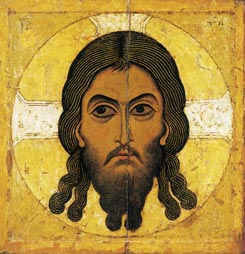there is still time to register for Session 1
Please register by sending a deposit of $75.00 to Icon Art Studios, 13921 127th Street North, Stillwater, MN, 55082. All inquiries can be sent via e-mail or by calling 612-889-5868.
Welcome to Icon Class https://korlukastudios.com/wp-admin/post.php?post=1115&action=edit
Icon class will serve the purpose of an introductory study of icon painting technique along with theological and spiritual study of icons.
Icons are painted in a way that is designed to be timeless and to represent the eternal Kingdom or the Heavenly Jerusalem. The art form in a Holy icon is intended to be an abstraction producing a spiritual art, which recurs in the painting of icons in any generation or country, always remaining constant, consistent and prescribed by canon rule. It is for this reason that icons convey an art purely idealistic, and not meant to be realistic.
The primary purpose of a Holy icon is to enable a face-to-face encounter with a holy person or to make present a scared event.
Icons communicate Christian truth in visual form. Portrait icons reveal information in regards to virtues that we try to observe and remember in the holy person depicted. We as onlookers are asked to enter into the living presence and power of the holiness depicted and into celebration of the sacred event.
Session 1 introduces immersion into the Holy Face of Christ, or also called The Icon Not Painted By Human Hands. The Holy Face, the Church’s first icon is significant for iconography because the Word of God took flesh in Christ and became part of the material world. Christ Himself gave us His image, His Face, on the cloth for the King of Edessa. It is why we can make images that represent Him.
I welcome you and am excited for 2018 icon classes. Icon class in itself becomes a vehicle to share in faith through iconography as a witness and ministry. Session 2 and 3 encounter a different prototype every year.
Byzantine iconography is a contemplative art giving rise to the wonder of human relationship and God’s love. In closing, this beautiful segment from an article written by Met. Kallistos Ware offers us preparation,
“Half a century ago, a highly instructive book was written on the Christian understanding of the human person, a book still worth reading and too much neglected. It was by a Scottish philosopher, John MacMurray, entitled Persons in Relation. His theme was “personhood is relational”. As persons, we are what we are only in relation to other persons. No one—isolated, cut off from others, turned inward—is truly a person according the image and likeness of God, the Holy Trinity. Not that John MacMurray actually mentions the Trinity. It would have greatly strengthened his argument had he done so.
The early Christians used to say [0:10:11] unos christianus, nolos christianus—one Christian, isolated and cut off from the others, is no Christian. We can extend that saying—[0:10:29] una persona, nula persona—one person, cut off, isolated from others is not truly a person. As MacMurray puts it, “The self exists only in dynamic relation with the other. The self is constituted by its relation with the other. It has its being in its relationship. There is no true person,” he continues, unless there are at least two persons communicating with one another. To be human is to be dialogic—to engage in dialogue.” And so MacMurray concludes, “I need you in order to be myself.” All of this has been developed from the Orthodox side by the Greek theologian, John Zizioulas, Metropolitan of Pergamon. This theme, that human personhood is relational, is evident in the very word used for “person” in the Greek language. The word for “person” in Greek is prosopon—it means “face” or “countenance”. I am not a person unless I face other persons, unless I look into their eyes and let them look into mine.”
 Savior Made without Hands
Savior Made without Hands
Novgorod School
12th cent.
Tretyakov Gallery
No comments yet.